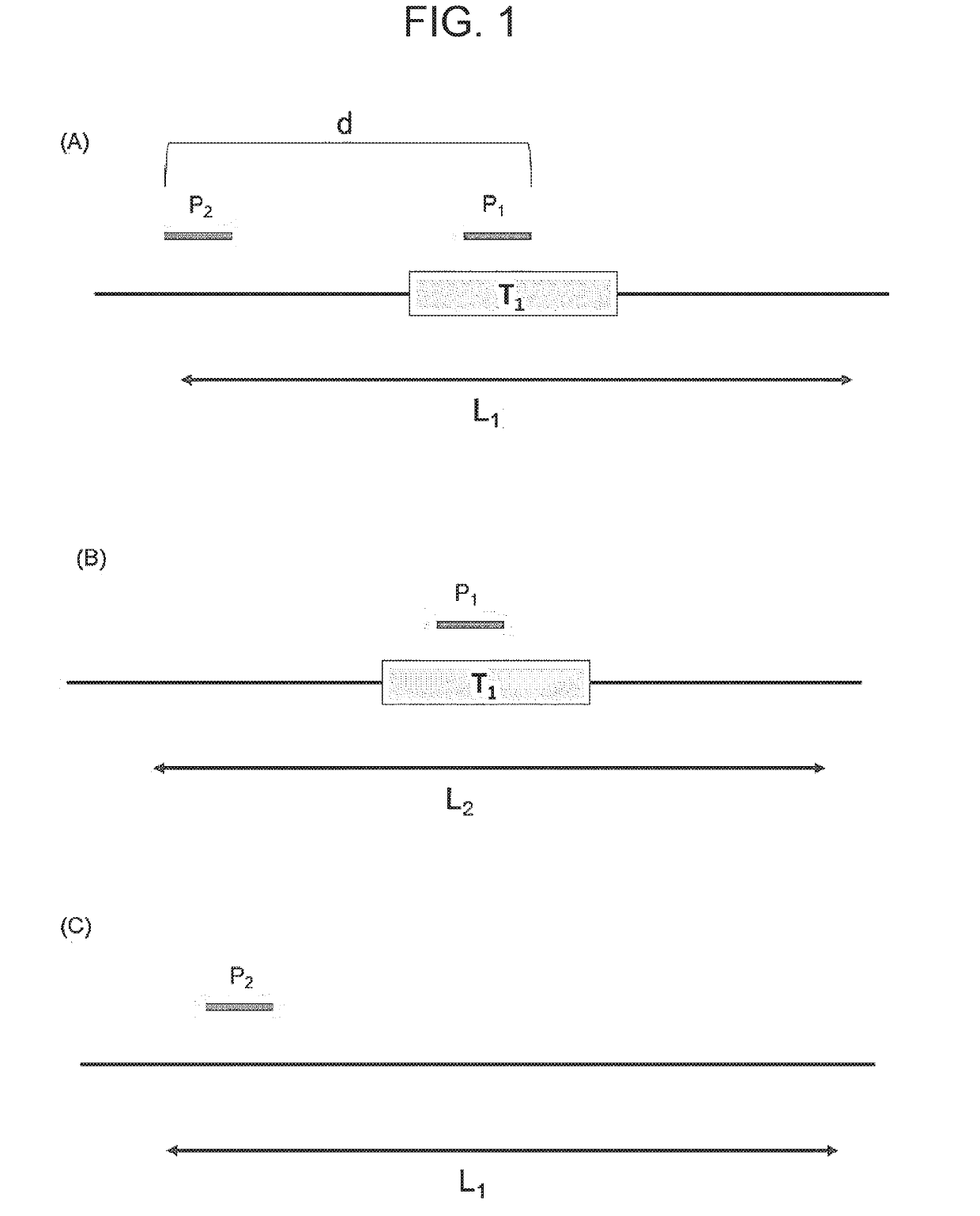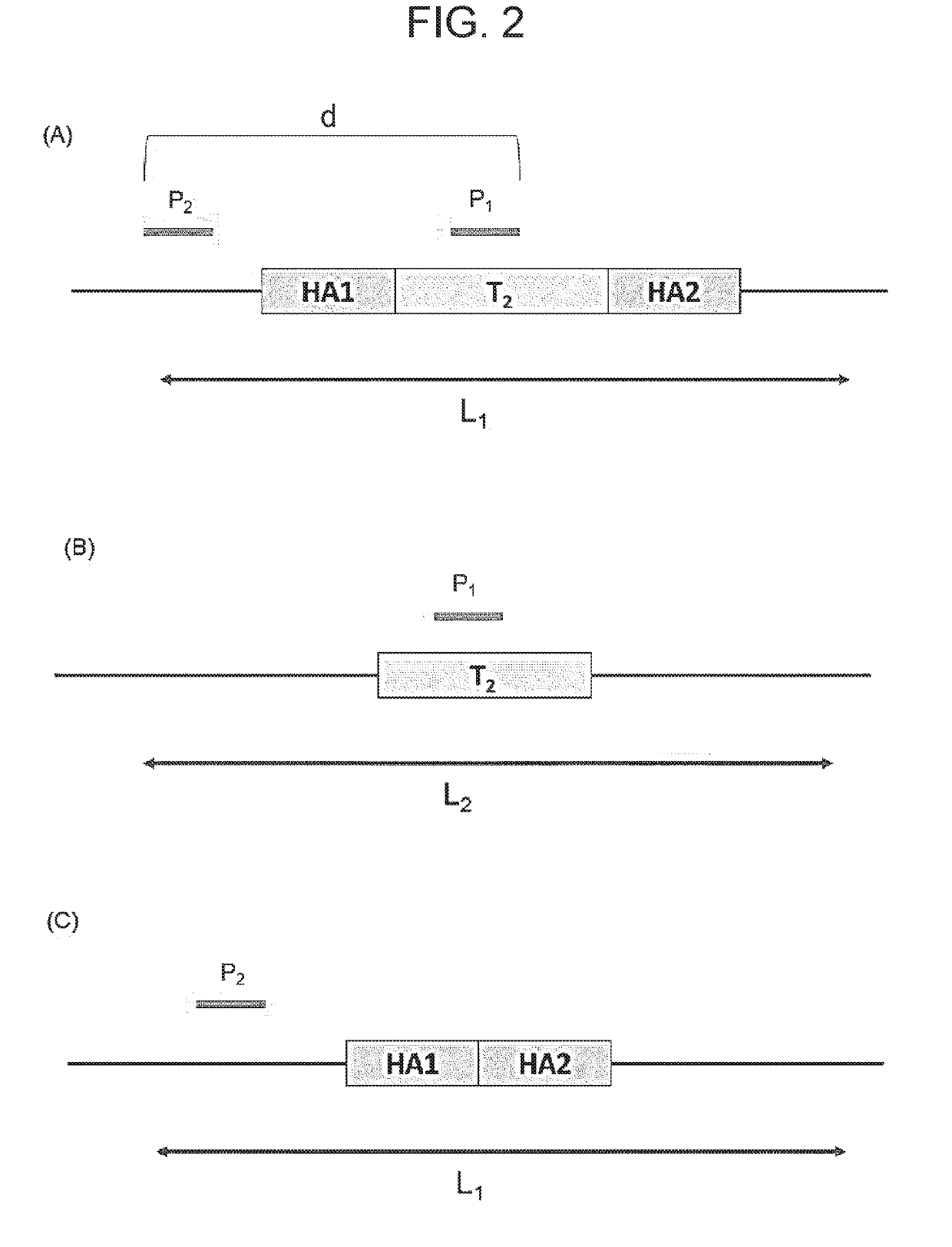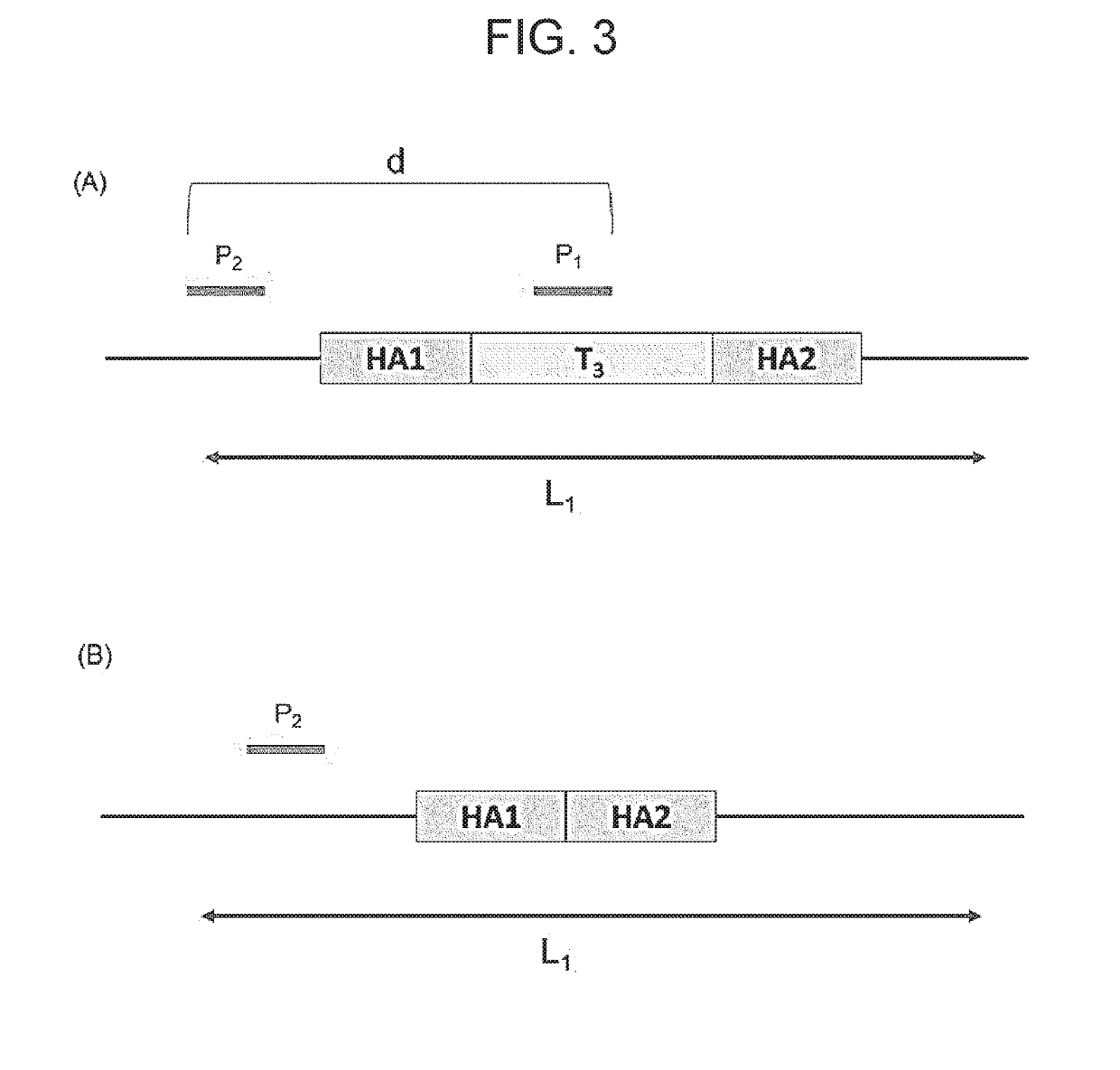Method for modifying target site in genome of eukaryotic cell, and method for detecting presence or absence of nucleic acid sequence to be detected at target site
- Summary
- Abstract
- Description
- Claims
- Application Information
AI Technical Summary
Benefits of technology
Problems solved by technology
Method used
Image
Examples
example 1
nt in Knock-in Efficiency Via Cotransfection of Selection Plasmid
[0232]Insertion of an artificial nucleic acid sequence (exogenous nucleic acid sequence) was performed to a target site of Adenomatous polyposis coli (APC) gene in the genome of a cell. For a nuclease template nucleic acid, a gRNA template nucleic acid, a targeting template nucleic acid and a selection template nucleic acid, a plasmid vector expressing Cas9 of Streptococcus pyogenes (nuclease vector, Cas9), a plasmid vector expressing a gRNA (gRNA vector, APCAS56), a plasmid vector comprising an artificial nucleic acid sequence (targeting vector, APCshort #2) and a plasmid vector expressing a puromycin resistance gene (selection vector, pEBmultipuro) were used, respectively. The mixture of these plasmid vectors was transfected to a colon carcinoma cell line, HCT-116 at a condition of 500,000 cells / 10 μl via an electroporation method. For the transfection, reagents and electroporation parameters for HCT-116 of Neon (Inv...
example 2
nt in Knock-in Efficiency Via Cotransfection of Selection Plasmid (Artificial Nucleic Acid Sequence Changed)
[0239]Insertion of an artificial nucleic acid sequence (exogenous nucleic acid sequence) was performed in the same manner as Example 1 expect that TNNI1 gene in the genome of a cell was used as a target site.
[0240]For the targeting template nucleic acid (targeting oligo) comprising an artificial nucleic acid sequence, TNNIOligo having a nucleic acid sequence in which a nucleic acid sequence of 20 bps has been inserted into exon 7 of TNNI1 gene was used, and for the plasmid vector expressing a gRNA (gRNA vector), TNNI207 was used. The gRNA recognition sequence in the nucleotide sequence of exon 7 of TNNI1 gene is shown in SEQ ID NO: 7.
[0241]The transfection was performed with varying ratios (molar ratios) of the puromycin resistance gene expressing plasmid to the total amount of the entire introduction nucleic acids, cell culture was performed under the presence of puromycin, a...
example 3
nt in Knock-in Efficiency Via Cotransfection of Selection Plasmid (Cell and Artificial Nucleic Acid Sequence Changed)
[0244]Insertion of an artificial nucleic acid sequence (exogenous nucleic acid sequence) was performed in the same manner as Example 2 expect that a cell was changed to a cervical carcinoma cell line, HeLa. That is, from Example 1, a cell was changed to a cervical carcinoma cell line, HeLa, and a target site in the genome was changed to TNNI1 gene.
[0245]The transfection was performed with varying ratios (molar ratios) of the puromycin resistance gene expressing plasmid to the total amount of the entire introduction nucleic acids, cell culture was performed under the presence of puromycin, and puromycin resistance gene expressing cells were selected. The genomic DNA was extracted from the selected cells to perform the following PCR analysis.
[0246]FIG. 12 shows a result of the knock-in efficiency (=100×Y / (X+Y)) calculated by quantifying the amount (X) of the amplificati...
PUM
| Property | Measurement | Unit |
|---|---|---|
| Fraction | aaaaa | aaaaa |
| Length | aaaaa | aaaaa |
| Electrical resistance | aaaaa | aaaaa |
Abstract
Description
Claims
Application Information
 Login to View More
Login to View More - Generate Ideas
- Intellectual Property
- Life Sciences
- Materials
- Tech Scout
- Unparalleled Data Quality
- Higher Quality Content
- 60% Fewer Hallucinations
Browse by: Latest US Patents, China's latest patents, Technical Efficacy Thesaurus, Application Domain, Technology Topic, Popular Technical Reports.
© 2025 PatSnap. All rights reserved.Legal|Privacy policy|Modern Slavery Act Transparency Statement|Sitemap|About US| Contact US: help@patsnap.com



